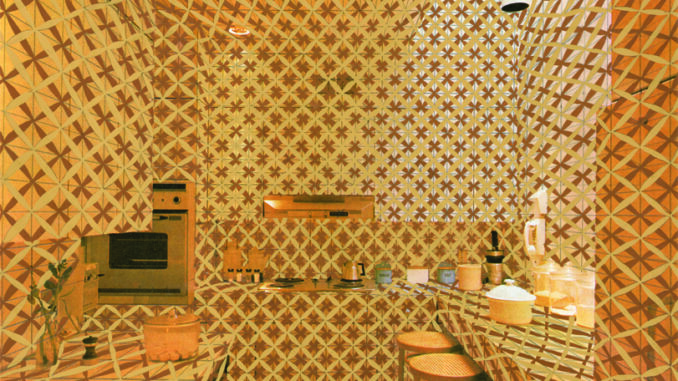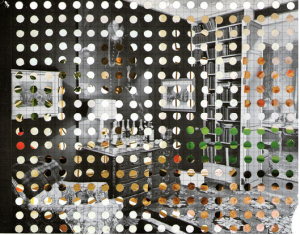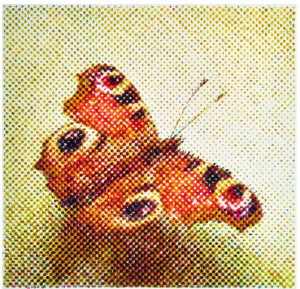
 If you had to sum up your current body of work simply and succinctly, maybe using just keywords, how would you describe it?
If you had to sum up your current body of work simply and succinctly, maybe using just keywords, how would you describe it?
My work explores our relationship with the spaces we live in, through both it’s physicality and associated memories. The pictorial space is flattened through the addition of colour, which I hope acts to disorientate and dislocate the viewer. The images I use are carefully selected to be setup or aspirational interiors from mid 20th century interior design books, which acts to further disengage the experience of my work from the reality of lived in spaces.
How do you start the process when making a new work? Do you work on one piece at a time, or several?
I usually work on one piece at a time, although I generally see them being part of a series of explorations. The discoveries I make through working on each piece provokes new implications and possibilities for the other works, it pushes me to keep creating.
Using paint as a blocking out tool rather than a descriptive one certainly goes against traditional art school teachings. How did it go down for you in uni and how did you come about making work in the way you do now?
The way I work now developed as a natural progression from the work I was making during my undergraduate course. I’ve always been interested in altering images through editing processes and pushing the 2-dimensional image into 3-dimensional space.
I always found art school to be very much aimed at helping students learn how to communicate their ideas without being constrained by traditional values.

Who are your top 5 inspirational artists?
I love Richard Hamilton’s prints and his treatment of interiors, Felice Varni’s clever geometric perspective site specific paintings and the sensitive repetitive works by Agnes Martin. I also look for inspiration through reading novels. I found reading George Perec’s “Life: A Users Manual” fascinating for it’s exploration of shared spaces and memories within a building. In “The Mysterious Flame of Queen Loana” by Umberto Eco the protagonist, suffering from memory loss, tries to rebuild his life through his looking through his childhood home. Both books use images to support the text and I love the interaction between the two methods of communication.
Tell us about the prints you are selling with JJ Gallery – current and upcoming.
The two prints I’m currently selling are “Kitchen” and “Fitted Carpetting” . In “Kitchen” I mapped the interior space with a grid/tile pattern, this draws our attention to the 2D quality of the image, it is also reminiscent of the method of creating perspective in Renaissance paintings. I am interested in the history of the rooms we live in and the second layer of paint suggests the layers of wallpaper you discover when redecorating a room. Fitted Carpetting is painted in a book, I wanted to explore the idea of the room coming out of the page and bleeding into the text. I am also interested in the idea of adding colour to black and white photos to make the memories more vivid.

Leave a Reply